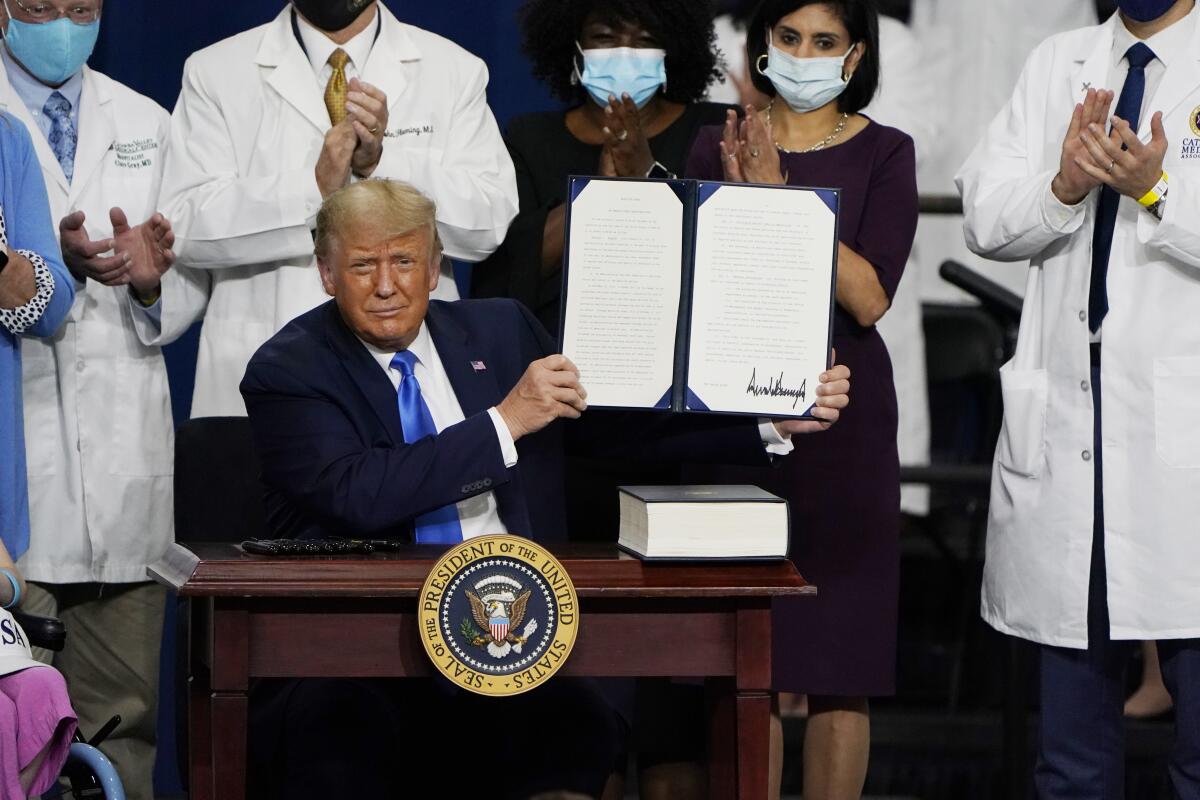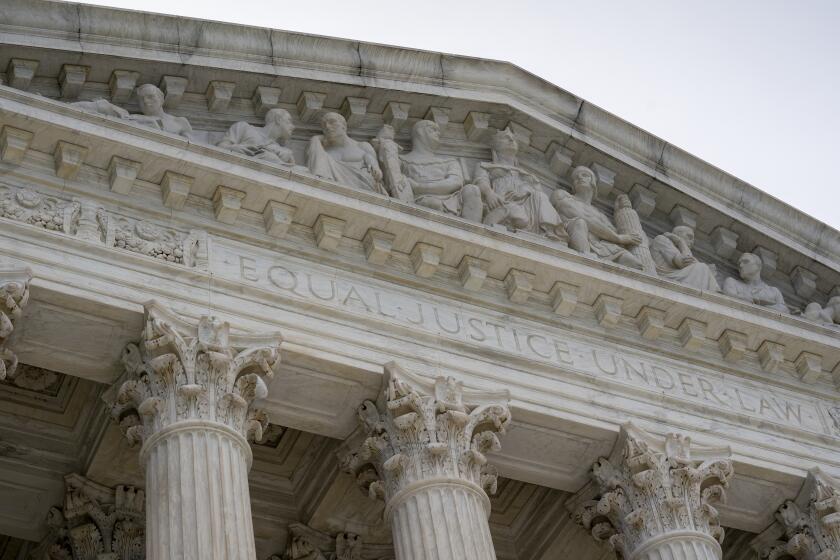Trump promises to protect sick Americans. Does his new order do that?

WASHINGTON â Less than six weeks before election day, President Trump traveled to North Carolina on Thursday to announce his commitment to protecting Americans with pre-existing medical conditions and to issue another round of executive orders related to healthcare.
âWe are delivering better care, with more choice, at a much lower cost and working to ensure Americans have access to the care they need,â Trump told supporters in Charlotte, saying his plan âalways protects patients with pre-existing conditions.â
But it remains unclear what kind of protections Americans may receive. Hereâs a rundown of what the presidentâs words really mean for Americans with pre-existing medical conditions.
Why are pre-existing conditions such a big deal?
Before the advent of the Affordable Care Act in 2010, health insurers would routinely refuse coverage to people who had pre-existing medical conditions, such as diabetes, cancer or allergies.
Even pregnancy could be deemed a pre-existing condition that an insurer could refuse to cover.
The healthcare law, often called Obamacare, barred insurers from this kind of discrimination, protecting the millions of Americans who live with medical conditions.
According to one estimate by the nonprofit Kaiser Family Foundation, about a quarter of non-elderly adults have a health condition that an insurer could decline to cover, if that were still allowed.
And nearly half of non-elderly families in the U.S. have at least one member with a health condition that could provide the basis for denying coverage, according to the foundation.
If Americans are already protected by Obamacare, why is Trump announcing an executive order on pre-existing conditions?
Trump has been calling for repeal of the health law for years and has been under growing pressure to lay out an alternative.
He never produced an alternative in 2017, when Republicans in Congress tried to roll back the law. And despite multiple promises since, he still hasnât laid out a plan to replace the law and its many consumer protections, including the ban on denying coverage to people with pre-existing conditions.
Currently, the administration, joining Texas and other conservative states, is asking the Supreme Court to wipe out the whole law. The justices are scheduled to hear arguments in that case shortly after the election.
With the recent death of Justice Ruth Bader Ginsburg, who has defended the health law in the past, the outcome of the case is much less clear.
Democrats could win the election and lose the Supreme Court for a generation
Former Vice President Joe Biden, the Democratic presidential nominee, has been intensifying criticism of Trump for trying to repeal the law and its consumer protections.
Could the executive order actually replace the healthcare law?
In a word, no.
While a president can use an executive order to direct federal agencies to do certain things, he or she canât change the law or place new legal requirements on how health insurers act in a commercial market.
That means Trump cannot simply tell insurers they must offer coverage to someone with a pre-existing medical condition.
If the Supreme Court strikes down the 2010 law, Congress would need pass a new law to bar insurers from denying coverage to people with pre-existing conditions, a fact acknowledged on Thursday by Secretary of Health and Human Services Alex Azar.
Whatâs so hard about that?
One of the reasons why the health law was so difficult to pass a decade ago is that health insurance is very complicated. Making coverage available to more people takes more than simply directing health insurers to cover people with pre-existing medical conditions.
The most important issue is that requiring insurers to cover people with pre-existing conditions makes health insurance much more expensive.
The healthcare law deals with that problem in two ways: It bars insurers from charging people with pre-existing medical conditions more than people who donât have such conditions. That spreads the extra cost among more people.
And, very importantly, the law provides subsidies to low- and moderate-income Americans to help them buy health plans. These subsidies are critical because they make insurance more affordable, at least for those whose incomes make them eligible for the government help.
Those who earn too much for the subsidies face higher premiums â caused largely by the pre-existing condition requirement. Those higher costs have helped drive much of the criticism of the law.
Does Trumpâs order do anything about those issues?
No.
The presidentâs order does not address the cost of insurance or the other consumer protections that are linked to protecting people with pre-existing conditions, such as the lawâs ban on charging women more than men or its limits on how much more older people can be charged than younger people.
So, what does Trumpâs order do?
Administration officials said Thursday the executive order merely states that it is the policy of the United States to protect people with pre-existing medical conditions.
That makes the order more of a symbolic statement, with no real effect on health insurers or people with pre-existing conditions.
More to Read
Get the L.A. Times Politics newsletter
Deeply reported insights into legislation, politics and policy from Sacramento, Washington and beyond. In your inbox three times per week.
You may occasionally receive promotional content from the Los Angeles Times.












